When most people think “sapphire,” a brilliant blue hue comes to mind. And who could blame them? For the most part, blue is the name of the game as far as sapphires go. As with many gems, however, there are different varieties of sapphire – itself a variety of gem corundum, along with ruby. Arguably the most prized of them all is the padparadscha sapphire, an extremely rare form not well known by the general public.
This post is all about what you want ever to know pertaining to Padparadscha Sapphire. If you find it useful, don’t forget to share. Let’s get it started!
Meaning
Well-known or not, no one disagrees that padparadscha is hard to pronounce (for reference, it’s pad · pah · raj · ah). Just pronouncing it correctly is only one piece of the puzzle, though. What exactly does it mean?
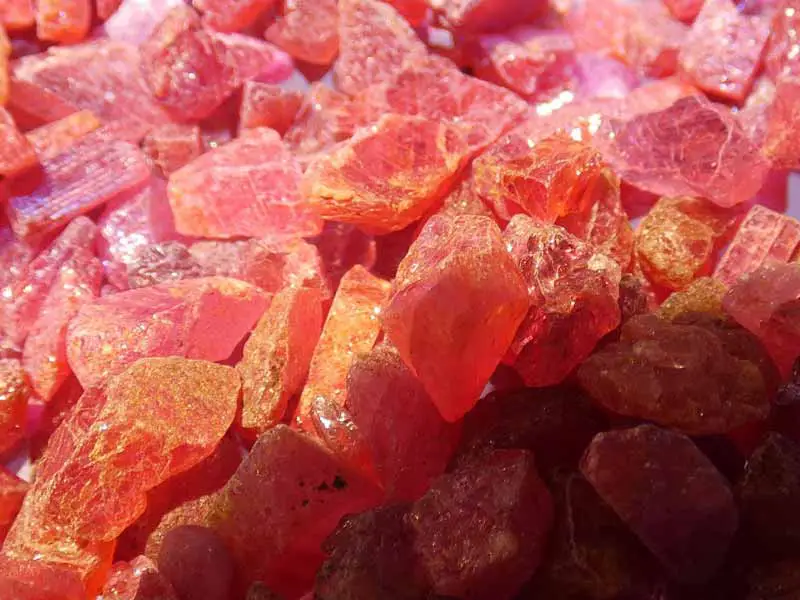
The term is derived from a word in Sinhalese, one of the two official languages of Sri Lanka today. That word roughly translates to “aquatic lotus blossom,” or “tropical lotus flower.” Either way, padparadscha sapphires are as beautiful as any lotus, if not more so.
To get the best benefits of padparadscha, it is usually a good idea to wear it, the rings are the most popular choice.
Properties
Physical Properties
Speaking in terms of physical properties, there are a few identifying traits that help distinguish padparadschas from the rest of the pack.
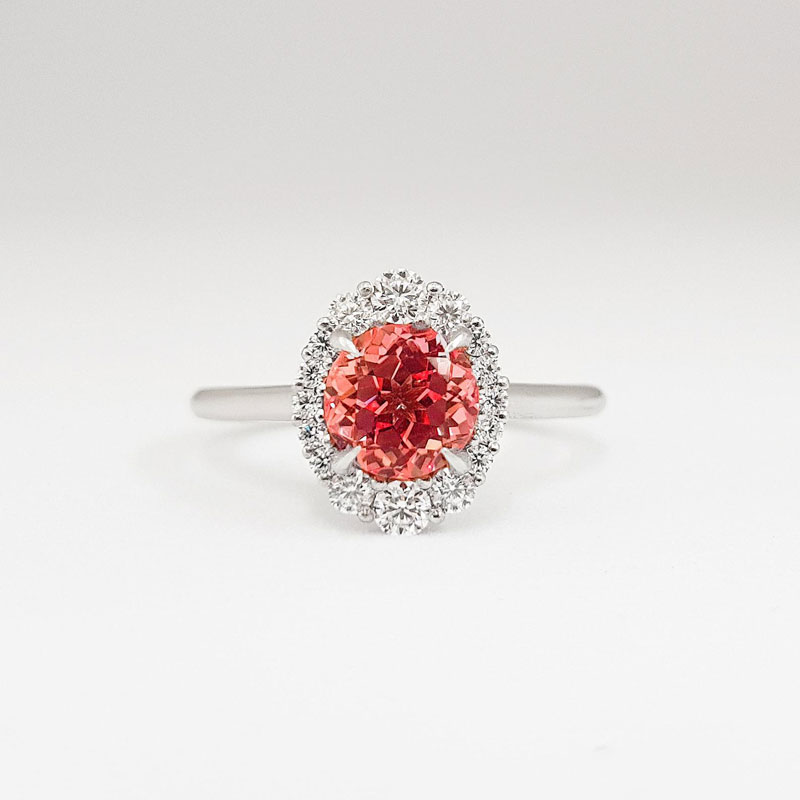
Padparadschas are typically a stunning mixture of orange and pink – a combination not seen almost anywhere else in the natural world. One might say the coloration of these sapphires blends that of pink lotus flowers with gorgeous orange sunsets. Of course, no two individual gems look the same, so the amount of orange versus pink will vary, as will how light or dark the colors are. Some stones may even contain some areas or bands of yellow, a phenomenon referred to as color zoning, and not something to worry about. Note that the colors will appear most vibrant when in good daylight or under fluorescent lighting (as opposed to incandescent bulbs).
When it comes to padparadschas, clarity is linked to color in an imperative – almost essential – way. Because this sapphire is so light in color, it isn’t difficult to spot inclusions within the gem – that is, materials that may have been trapped inside of it while it was forming. All gems but diamonds have at least some inclusions, but those are small enough not to matter, and a lack of them could mean the stone isn’t natural.
Optimally, padparadschas should be eye-clean, meaning no inclusions should be visible without the aid of magnifying instruments. Being so rare, though, means potential buyers may have to be willing to compromise higher color quality for lower clarity. That willingness to make such a tradeoff will differ from person to person, but it’s best to be aware just in case.
In terms of cut, padparadschas don’t follow the same strict standards as, say, diamonds do. Diamonds are relatively colorless, and so cutters tend to emphasize their facets and overall dimensions as precisely as possible. With colored jewels such as padparadschas, those things certainly still matter, but the main goal is to bring out the color, ideally in a way that keeps said color uniform from multiple viewing angles.
An asymmetrical cut, then, wouldn’t be the worst thing that could happen to a padparadscha, especially if it worked to minimize inclusions while highlighting its one-of-a-kind pink-orange color. In fact, such a cut could play a key role in identifying real versus fake gemstones. That being said, padparadschas are usually found in oval or cushion cuts. Round and emerald cuts exist as well, but not as commonly.
It’s also worth considering the size of padparadschas. Finding one of these gems at over two carats is like finding a needle in a haystack, at least when it comes to exceptional quality. A stone at five or more carats, then, is like searching for that same needle in the ocean without any proper gear. Gemstones that heavy are as prized as they come, the stuff of high society auctions and royal treasuries. The largest known padparadscha is slightly over one hundred carats, a specimen collected from Sri Lanka now (amazingly) on display at the American Museum of Natural History in New York City.
Metaphysical Healing Properties
There’s more to padparadschas than just their Mohs hardness scale rating (9, by the way – the hardest rating except for diamond). Their metaphysical properties also merit discussion.
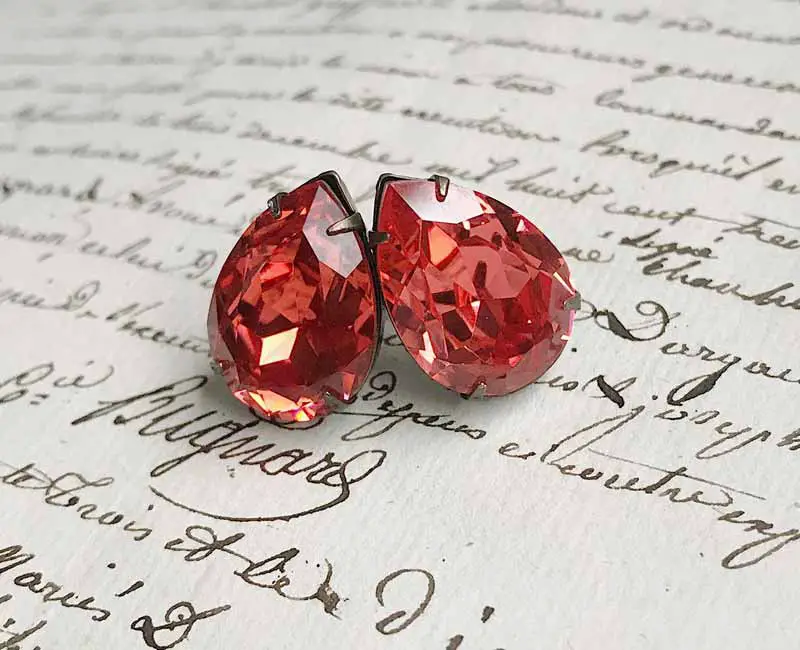
Padparadschas are intimately linked with change – change for the better, that is. No matter the clarity of the individual gemstones themselves, they encourage a sort of inner clarity, breaking down whatever walls the wearer may have put up to guard against (or in fear of) change. This can lead to a certain calmness, an acceptance of and newfound trust in oneself, making change even easier.
In a manner of speaking, wearing this stone is a self-confidence boost, nurturing the ability to face oneself and realize that change can be a good thing. By extension, helping strengthen trust in oneself can also aid in improving your relationships with others. This goes for coworkers, friends, family, lovers – most any sort of companionship in which some level of commitment is involved.
Not entirely unrelated to being more open to change and having more confidence in yourself, padparadschas are connected to one’s ability to discern properly and judge fairly. That’s a skill you can never be too good at, as it will help inform one’s thoughts and choices both in the short and long term. In this way, wearing it can be a source of determination, especially in the face of strong opposition. Being able to discern and judge more accurately means having a clearer head, grounding the self in reality as firmly as possible.
Creative people can also benefit greatly from the padparadscha’s metaphysical attributes. The gemstone is expressive in and of itself – consider its unparalleled coloration alone and the reason is apparent. That expressiveness can ignite in its wearer as well, manifesting in a renewal or spark for creative passions and endeavors. Whether the wearer is a sculptor or a junk artist, it emboldens them to more openly embrace life and accept whatever artistic truths govern their work.
The metaphysical has a few effects on the physical side of things, too. For one thing, padparadscha can assist in bringing the body’s balance back. It does this in a number of ways: facilitating the regulation of glands, getting the veins to be more efficient at what they do, and even playing a role in treating blood disorders. Outside of the realm of health, it can affect wearers sensually as well. The gemstone bolsters fertility and sexual desire – a winning combination in concert with its penchant to improve relationships. What’s more, it stimulates sexual pleasure.
Where to Buy Padparadscha?
Usually Etsy or Amazon is a good idea. Etsy is the leading online global marketplace of handmade, vintage, and creative goods. Amazon is one of the largest global online marketplaces. Both of them are reliable and easy to find your favorite items there.
Padparadscha in Jewelry Uses
A gemstone as stunning as padparadscha makes for some equally stunning jewelry, from rings to earrings to pendants and beyond.
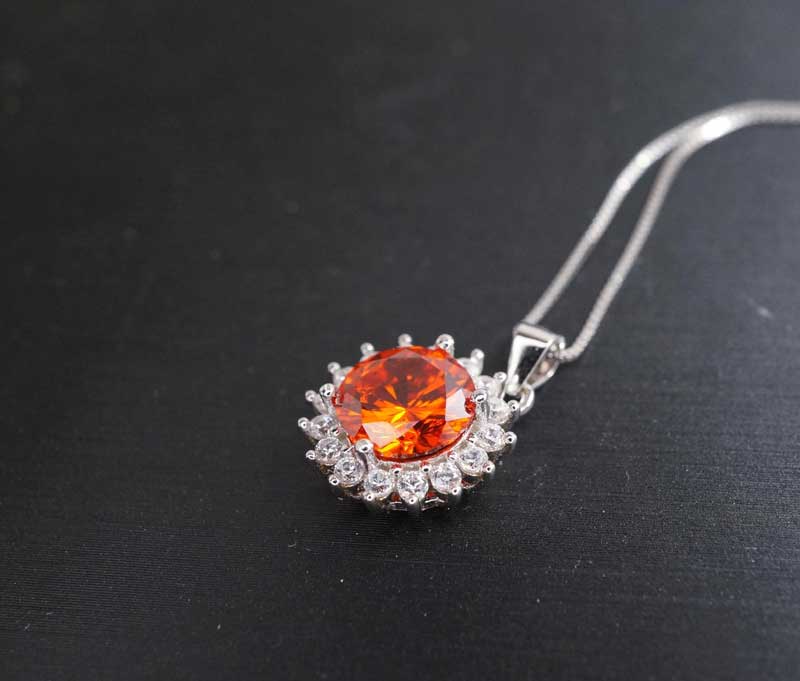
Jack Brooksbank married Princess Eugenie of the British royal family, proposing a padparadscha engagement ring. The ring itself was fairly simple, but not less elegant for it: a padparadscha center stone encircled with diamonds. It started a trend, of course, and with good reason, as finding a ring of that color and beauty is a rare thing indeed.
Most padparadscha rings are schematically similar to Princess Eugenie’s, that being the stone in the center with diamonds all around. That doesn’t mean, however, that they all look the same. The size, shading, and cut of the stone vary, as does the arrangement of diamonds.
Padparadscha earrings are just as varied in their design. Of course, they’re generally lighter weight-wise, as earlobes aren’t as durable or flexible as fingers. Other than that, though, these earrings are as fun to pick out as any, since the choices range from dangling to stud.
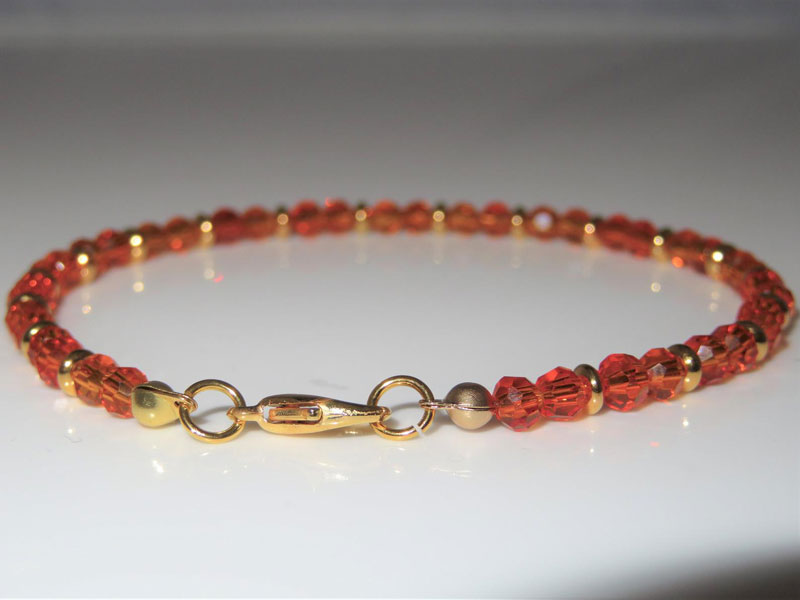
Padparadscha pendants are likely the most varied, if only by virtue of the fact that jewelers have more overall room to work with. Since pendants are often more immediately noticeable than both rings and earrings, they make a great gift for anyone who goes out a lot or attends high-end parties.
It wouldn’t be hard to continue with examples of brooches, cufflinks, bracelets – all kinds of jewelry. The idea is that no matter what the buyer is looking for, it exists in a number of varieties and styles. Whatever the final choice may be, padparadscha is sure to stun.
Where Does Padparadscha Come From?
Being that padparadscha is derived from a Sinhalese word, it’s only appropriate that the precious gemstone itself comes from that language’s county of origin: Sri Lanka, an island nation just south of India. Mining in Sri Lanka began nearly two millennia ago, and continues to this very day, as the island naturally produces an incredible variety of gemstones – notably sapphires. For a good portion of that two thousand years or so, people believed them were exclusive to Sri Lanka – and rightly so, since it’s one of the rarest varieties of sapphire there is, if not the rarest.
More recently, however, naturally occurring padparadschas have been discovered in several other countries. The three primary contenders are Vietnam, Madagascar, and Tanzania. It’s not so simple as picking a country and calling it a day, however. If the stones from Sri Lanka are considered the traditional vein, then there are those who would argue that the other countries’ stones are like close cousins: similar in appearance, but with noticeable differences.
Of note are the Madagascar variety, which comes off as pinker, and the Tanzanian variety, which can be dark orange enough to be called brown. Ask most gem experts, and they’ll say the Sri Lankan original is the way to go – or even the only “real” ones out there.
How Much Is Padparadscha Worth
As to be expected of such a scarce variety of sapphire, padparadschas don’t come cheap by and large. It goes without saying, though, that the price range is affected by a multitude of factors: the quality of the gemstone in question, its color and size.
That being said, padparadschas on the lower end of the spectrum may only be a few hundred dollars, but they won’t have the magnificence and sheen of their higher quality counterparts; said counterparts can reach several thousand dollars per carat. To put a number on it, well-formed, untreated (meaning they were not subject to heat treatment) padparadschas can hypothetically land anywhere between $30,000 and $50,000 per carat.
To use a real-world example, let’s return to the engagement ring Jack Brooksbank gave to Princess Eugenie mentioned earlier. The gemstone is estimated to weigh in at around five carats. If it is unheated, then it most likely costs somewhere in the ballpark of £100,000 (that’s about $130,000).
How to Identify Padparadscha?
As one might imagine, the sheer worth of padparadscha has spawned a multitude of imitators. Crafty as the fakers may be, however, it’s no simple task evading the eye of the AGTA (American Gem Trade Association) and/or the GIA (Gemological Institute of America). If a buyer is ever unsure, they can always check with one of these institutions.
At times, padparadschas – especially the non-Sri Lankan varieties – are heat-treated, a process intended to stabilize clarity and color. Gemstones of excellent quality often sell for twice as much as their untreated cousins; at lesser qualities, they sell for about the same amount. This is all well and good.
The problem is that a new treatment method was developed that could make non-padparadschas seem like the real deal. This method involves infusing beryllium into the stones while they are being heat-treated, closely imitating the unique pink-orange hue. Gemologists can sniff it out now, but back in the 1990s, it was a serious issue in the gem market. The false coloration will dissipate if the “padparadscha” is left in the sun for long enough, but getting it tested is highly suggested.
Less complex but equally devious methods have also taken root, stuff as oiling and dying the stones, diffusing the surface alone, and producing synthetic padparadschas from the ground up. These techniques are far easier to spot than beryllium diffusion, but again, it’s never a bad idea to allow gem labs to perform some testing to make sure. After all, if one pays good money for a product, they should receive that product, not some cheap imitation of it.
How to Use Padparadscha?
How one chooses to wear padparadscha, or what one wears it with, is honestly up to the wearer. That doesn’t mean that a few suggestions aren’t in order, of course.
Orange and pink are relatively light colors, and so they merit something that enhances them rather than overshadows them. The best metals to pair it with, then, are silvery-white gold, platinum, and settings of that nature; add some white diamonds and the orange-pink sapphire will really pop. The darkest one should go is rose gold, and that’s best saved for earrings, where the stone will stick out more anyway.
Best Combinations With Padparadscha
In terms of color combinations, finding a gemstone to complement the padparadscha would place emphasis on both. Since the lotus flower after which the term padparadscha is named exudes a tropical, marine vibe, a lighter blue would work quite beautifully. A potential gem for that occasion: aquamarine. On a larger scale, a black dress is a fine foil for a padparadscha ring – though it wouldn’t work as well with a padparadscha pendant, as the black would dim the brilliant orange pink when right next to it.
How to Cleanse Padparadscha?
In spite of being such a special, one-of-a-kind jewel, the padparadscha is surprisingly easy to clean. All that’s needed is water, soap (avoid enzyme cleaners and chlorine-heavy detergents), and a toothbrush. Just let the jewelry soak in the soapy water; leaving it in should start getting rid of any unwanted grunge. Take it out after a bit, and brush off any remaining filth with the toothbrush. Rinse it off, dry it with a soft cloth, and voila! The stone should look good as new.
An alternative cleaning method: ultrasonic cleaning machines. As sapphire is harder than the majority of gemstones, there’s little need to worry about any real damage via such machines. Just be wary of the padparadscha rubbing against the sides of the machine, and everything should be a ship-shape.
Final Words
There’s no denying the beauty and versatility of a gem as unique as the padparadscha. Its unforgettable orange-pink coloration stands out amongst its sapphire peers – amongst all gemstones, really. There is an abundance of reasons to wear it, from its metaphysical properties to its potential as a conversation piece. It has long been a coveted jewel, and that isn’t like to change anytime in the foreseeable future.